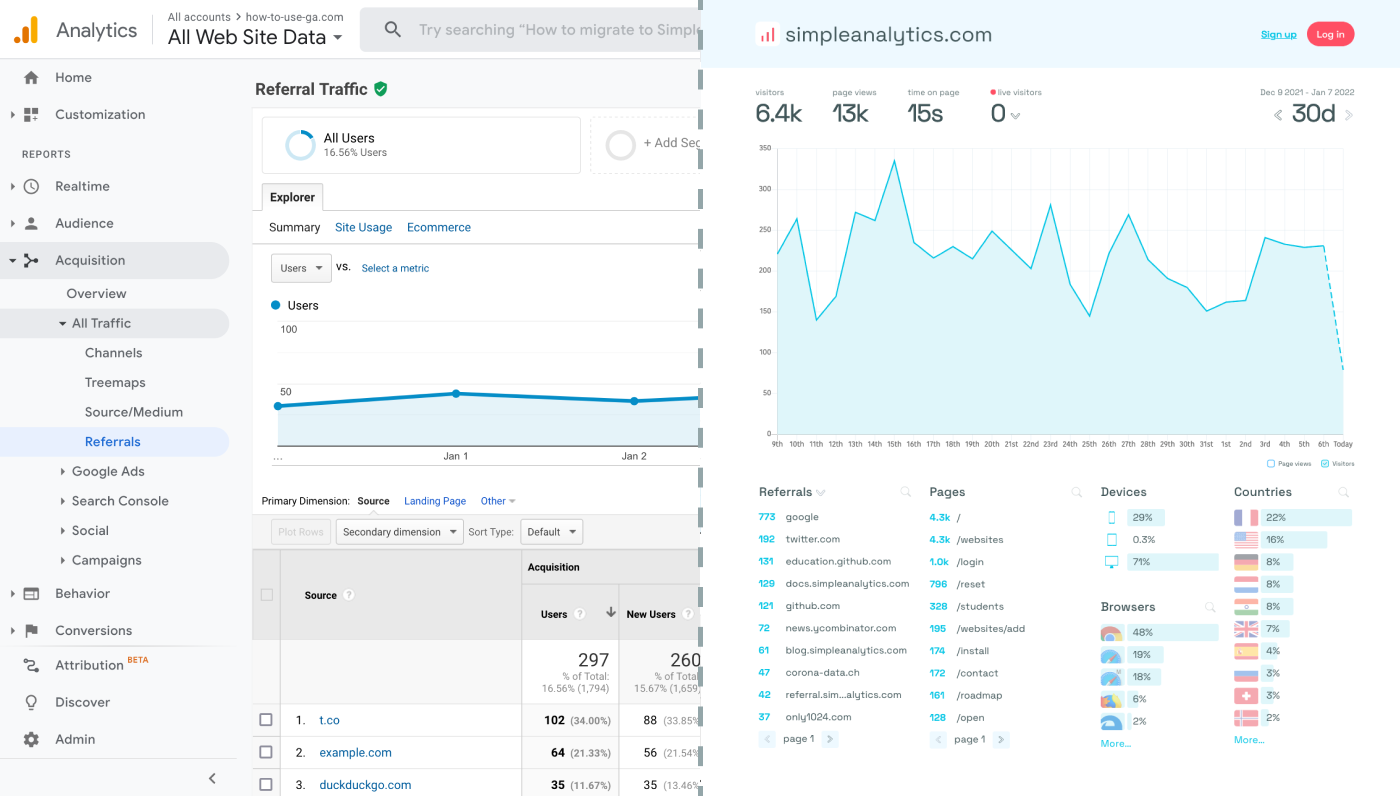Integrating Google Analytics with ActiveCampaign bridges the gap between email marketing and web analytics, allowing you to track the effectiveness of your email campaigns directly within your GA dashboard. Here is how you can integrate GA with ActiveCampaign, step by step.
Let's dive in!
- Ensure You Have Google Analytics Set Up
- Enable Site Tracking in ActiveCampaign
- Add Your Google Analytics Property ID to ActiveCampaign
- Use UTM Parameters for Email Campaigns
- Final Thoughts
Ensure You Have Google Analytics Set Up
Before you integrate, make sure that you have Google Analytics set up for your website. If you haven't done this yet, visit the Google Analytics website to create an account and follow the instructions to add your website.
...Or just use Simple Analytics. Privacy-friendly and simple. No complexity. No cookies. Just the data you need in a simple dashboard

Enable Site Tracking in ActiveCampaign
- Log in to your ActiveCampaign account.
- Navigate to Settings > Tracking.
- Ensure that Site Tracking is enabled. Site tracking allows ActiveCampaign to monitor your contacts' interactions with your website, which is crucial for this integration.
Add Your Google Analytics Property ID to ActiveCampaign
In ActiveCampaign, you can add your Google Analytics Property ID (also known as the tracking ID) to ensure that your email campaigns are tracked:
- Within the same Tracking section, look for the Google Analytics integration option.
- Enter your Google Analytics Property ID into the designated field. Your GA Property ID starts with "G-" and can be found in your GA account under Admin > Property Settings.
- (Optional) Consider using different GA properties (and the corresponding GA Property ID) to track different campaigns. This prevents GA from conflating the data.
Use UTM Parameters for Email Campaigns
UTM parameters are tags added to the end of a URL that Google Analytics uses to track the performance of campaigns and content. When creating email campaigns in ActiveCampaign:
- Develop a consistent strategy for using UTM parameters. Common parameters include:
- utm_source: Identify the source of traffic, e.g., ActiveCampaign.
- utm_medium: The marketing medium, e.g., email.
- utm_campaign: The specific campaign name.
- Add these parameters to the links in your email campaigns. ActiveCampaign offers options to automatically append UTM parameters to your links, simplifying this process.
Final Thoughts
Adding Google Analytics to your campaign can give you great insights. However, ask yourself: is Google Analytics the right tool for you?
Google Analytics is great, but also complex and a bit clunky. If you just want a straightforward dashboard with the insights you need, GA is not a great place to start. Additionally, Google doesn't care about privacy and GA requires an annoying cookie banner.
That's why we built Simple Analytics, a privacy-friendly and simple analytics tool - no personal data, no cookies, just the insights you need in a straightforward dashboard.
If this resonates with you, feel free to give Simple Analytics a spin (It's free). You just need to add the script and off you go. This takes about one minute- and it's easy to integrate with Active Campaign.
Enjoy!
